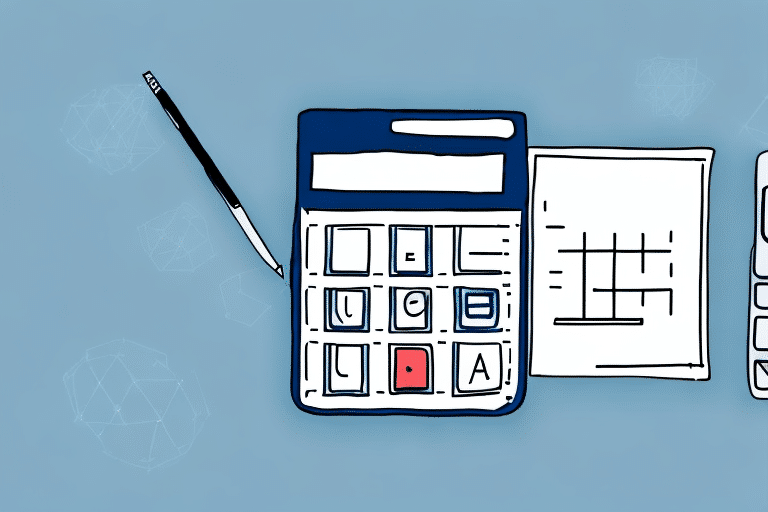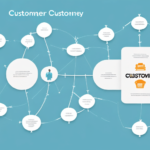Understanding Customer Retention and Its Importance
As a business owner, one of your primary goals is to attract new customers while keeping existing ones happy and satisfied. This is where customer retention comes into play. The ability to retain customers determines the long-term success of your business. Are you wondering how to calculate your customer retention rate? You're in the right place! This article will guide you through the process of calculating your customer retention rate using an easy calculator.
Why Customer Retention Matters
Customer retention is the process of keeping your existing customers rather than solely focusing on acquiring new ones. In today’s competitive business environment, retaining customers is essential for sustained growth.
- Cost-Effective: It is easier and less expensive to retain existing customers than to acquire new ones.
- Increased Revenue: Satisfied customers are more likely to make repeat purchases and refer others, leading to increased revenue.
- Brand Loyalty: Retained customers are more likely to develop loyalty to your brand, fostering a steady revenue stream.
- Enhanced Reputation: Happy customers leave positive reviews and recommend your business, enhancing your reputation.
According to a Bain & Company report, increasing customer retention rates by just 5% can increase profits by 25% to 95%.
Calculating Your Customer Retention Rate
Understanding how to measure your customer retention rate is crucial for assessing the effectiveness of your customer experience efforts and identifying areas for improvement.
Definition and Importance
The customer retention rate is the percentage of customers that a business retains over a specific period. A high retention rate indicates that your business is effective at keeping its customers, while a low rate suggests potential issues that need addressing.
Step-by-Step Guide to Measuring Customer Retention Rate
- Determine the Time Period: Decide on the timeframe for which you want to measure customer retention (e.g., monthly, quarterly, annually).
- Count Your Customers: Note the number of customers at the start (S) and end (E) of the period.
- Identify New Customers: Determine the number of new customers acquired (N) during the period.
- Apply the Formula: Use the following formula to calculate your retention rate:
Customer Retention Rate = ((E - N) / S) * 100
Where:
- E: Number of customers at the end of the period
- N: Number of new customers acquired during the period
- S: Number of customers at the start of the period
For example, if you start with 100 customers, gain 20 new customers, and end with 110 customers, your retention rate would be:
((110 - 20) / 100) * 100 = 90%
Interpreting Your Retention Rate
A high customer retention rate indicates satisfaction and loyalty, which can lead to increased lifetime value (CLV) of customers. Conversely, a low retention rate may highlight issues with your products, services, or customer experience that need to be addressed.
Strategies to Improve Customer Retention
Improving your customer retention rate can significantly enhance your business's profitability and growth potential. Here are some effective strategies:
1. Provide Excellent Customer Service
Exceptional customer service can differentiate your business from competitors. Ensure that your support team is responsive, knowledgeable, and empathetic.
2. Implement a Loyalty Program
Rewarding your customers for their repeat business fosters loyalty. Consider offering discounts, exclusive deals, or points systems that can be redeemed for products or services.
3. Personalize Customer Experiences
Personalization makes customers feel valued. Use customer data to tailor recommendations, communications, and offers to individual preferences.
4. Solicit and Act on Feedback
Regularly seek customer feedback through surveys, reviews, and direct communication. Use this feedback to make informed improvements to your products and services.
5. Ensure Ease of Doing Business
Streamline your processes to make transactions, returns, and exchanges hassle-free. A smooth customer journey enhances satisfaction and retention.
Leveraging Technology for Customer Retention
Modern technology can play a vital role in tracking and improving customer retention rates.
Using CRM Software
Customer Relationship Management (CRM) software provides a comprehensive view of your customers, allowing you to segment them based on demographics, behavior, and preferences. This data can be used to create personalized marketing campaigns and improve customer interactions.
Popular CRM solutions include Salesforce, HubSpot CRM, and Zoho CRM.
Automating Communication
Automated email campaigns and chatbots can help maintain regular communication with customers, providing timely updates, promotions, and support.
Analyzing Successful Companies
Looking at companies with high customer retention rates can provide valuable insights.
Apple Inc.
Apple retains customers through high-quality products, seamless ecosystem integration, and exceptional customer service. Their focus on innovation and user experience fosters strong loyalty.
Amazon
Amazon's customer-centric approach, vast product selection, competitive pricing, and Prime membership benefits contribute to its impressive retention rates.
Nordstrom
Nordstrom excels in customer service, offering personalized shopping experiences and generous return policies, which enhance customer satisfaction and loyalty.
Avoiding Common Pitfalls in Retention Calculation
Accurately calculating customer retention rate is essential for deriving meaningful insights. Avoid these common mistakes:
- Incorrect Time Period: Selecting an inappropriate timeframe can distort retention metrics.
- Ignoring New Customers: Failing to account for new customers can lead to inaccurate retention rates.
- Inaccurate Customer Counts: Ensuring accurate counts of starting and ending customers is crucial.
- Lack of Segmentation: Not segmenting customers can obscure important trends and insights.
Maximizing Customer Lifetime Value (CLV)
Customer Lifetime Value (CLV) is the projected revenue a customer will generate during their relationship with your business. CLV and retention rates are closely linked; higher retention typically increases CLV.
Strategies to Increase CLV
- Upselling and Cross-Selling: Encourage customers to purchase higher-end products or complementary items.
- Enhancing Customer Experience: Continuously improve your service to keep customers satisfied and engaged.
- Personalized Marketing: Tailor your marketing efforts to individual customer preferences and behaviors.
According to a Harvard Business Review study, a 5% increase in CLV can boost your company's profitability by 25% to 95%.
Conclusion
Understanding and improving your customer retention rate is fundamental to the sustained success of your business. By implementing effective strategies, leveraging technology, and learning from industry leaders, you can enhance customer loyalty, increase lifetime value, and drive continuous growth. Regularly measure your retention rate, analyze the results, and adapt your approaches to meet evolving customer needs and expectations.




















